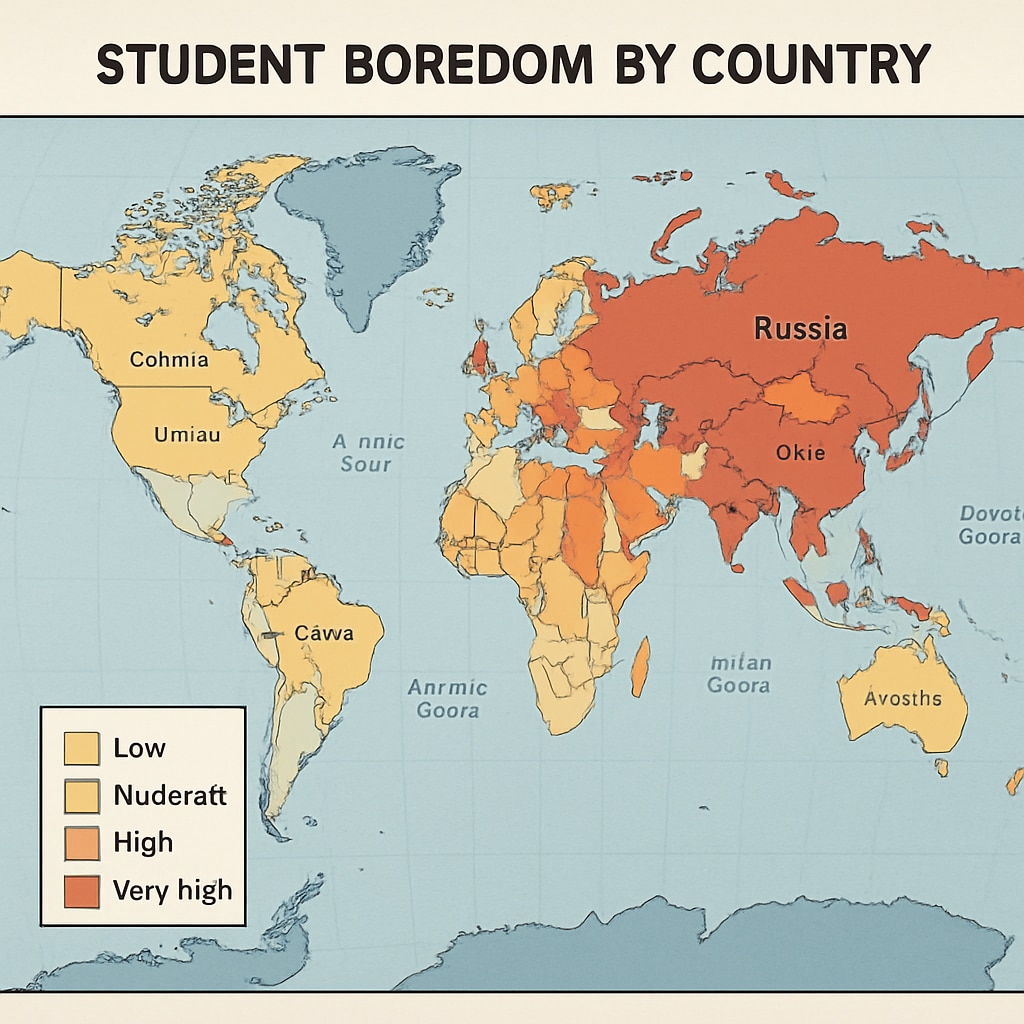Student boredom is a critical issue in modern education, and its impact is being increasingly recognized through cross-national research. In K12 education environments, boredom has been identified as a pervasive phenomenon that significantly affects student engagement and learning outcomes. This article delves into the global prevalence of student boredom, the underlying causes, and how educators can address this challenge using innovative and personalized teaching strategies.
Understanding the Global Scale of Student Boredom
Recent cross-national studies have revealed that student boredom is not confined to specific regions but is instead a widespread issue across the globe. For example, a 2020 OECD survey indicated that over 50% of students across developed nations report feeling disengaged during classroom activities. Similarly, a study by the Organisation for Economic Co-operation and Development (OECD) found that boredom levels were often higher in countries with rigid, test-focused curriculums.
The data highlights that boredom is not merely an individual experience but a systemic issue influenced by broader educational policies and cultural attitudes toward learning. For instance, students in countries with more flexible and creative curriculums, such as Finland, reported lower levels of boredom compared to those in nations with strict academic structures.

Key Causes of Boredom in K12 Classrooms
Understanding the causes of boredom is essential for developing effective interventions. Research identifies the following as primary contributors:
- Monotonous Teaching Methods: Repetitive and lecture-heavy lessons fail to capture students’ attention, leading to disengagement.
- Lack of Relevance: Students often find it difficult to connect classroom content to real-world scenarios, reducing their interest.
- Overemphasis on Testing: Test-driven education systems can diminish creativity and curiosity, making learning feel like a chore.
- Insufficient Student Autonomy: A lack of choice in learning topics or methods can make students feel powerless and disengaged.
These factors are often compounded by external influences such as technology distractions and mental health challenges. As a result, educators must address both systemic and classroom-level issues to combat boredom effectively.
The Impact of Boredom on Learning Outcomes
Student boredom has far-reaching consequences for academic performance and overall well-being. Studies have consistently shown that disengaged students are more likely to experience lower grades, higher dropout rates, and increased stress levels. Moreover, prolonged boredom can lead to a negative perception of education, discouraging lifelong learning habits.
For example, a study published in the Britannica overview on education found that students who reported frequent boredom were 30% less likely to retain information compared to their more engaged peers. This highlights the urgent need for interventions to make learning environments more stimulating and inclusive.

Innovative Strategies to Reduce Student Boredom
To counteract boredom in K12 classrooms, educators can adopt the following strategies:
- Personalized Learning: Tailoring lessons to align with individual student interests and strengths can foster greater engagement.
- Interactive Teaching Methods: Incorporating group discussions, hands-on projects, and multimedia tools can create dynamic learning experiences.
- Real-World Applications: Demonstrating how academic concepts apply to everyday life can enhance relevance and interest.
- Flexible Curriculums: Allowing students to choose certain topics or project formats can increase their sense of autonomy and motivation.
In addition, professional development for teachers is crucial. Training programs that emphasize innovative teaching techniques and emotional intelligence can equip educators to better address student needs and reduce boredom. For more insights, the Wikipedia entry on education offers a comprehensive overview of modern teaching strategies.
Conclusion: Building Engaging Learning Environments
Student boredom is a universal challenge in K12 education, as highlighted by cross-national research. While the causes are multifaceted, ranging from monotonous teaching methods to rigid curriculums, the solutions lie in creating more dynamic, flexible, and student-centered learning environments. By addressing this issue, educators can not only improve academic outcomes but also foster a lifelong love for learning among students.
As the global education landscape evolves, addressing student boredom must remain a priority for policymakers, educators, and parents alike. Through collaborative efforts, we can transform classrooms into spaces where curiosity thrives and boredom becomes a thing of the past.


